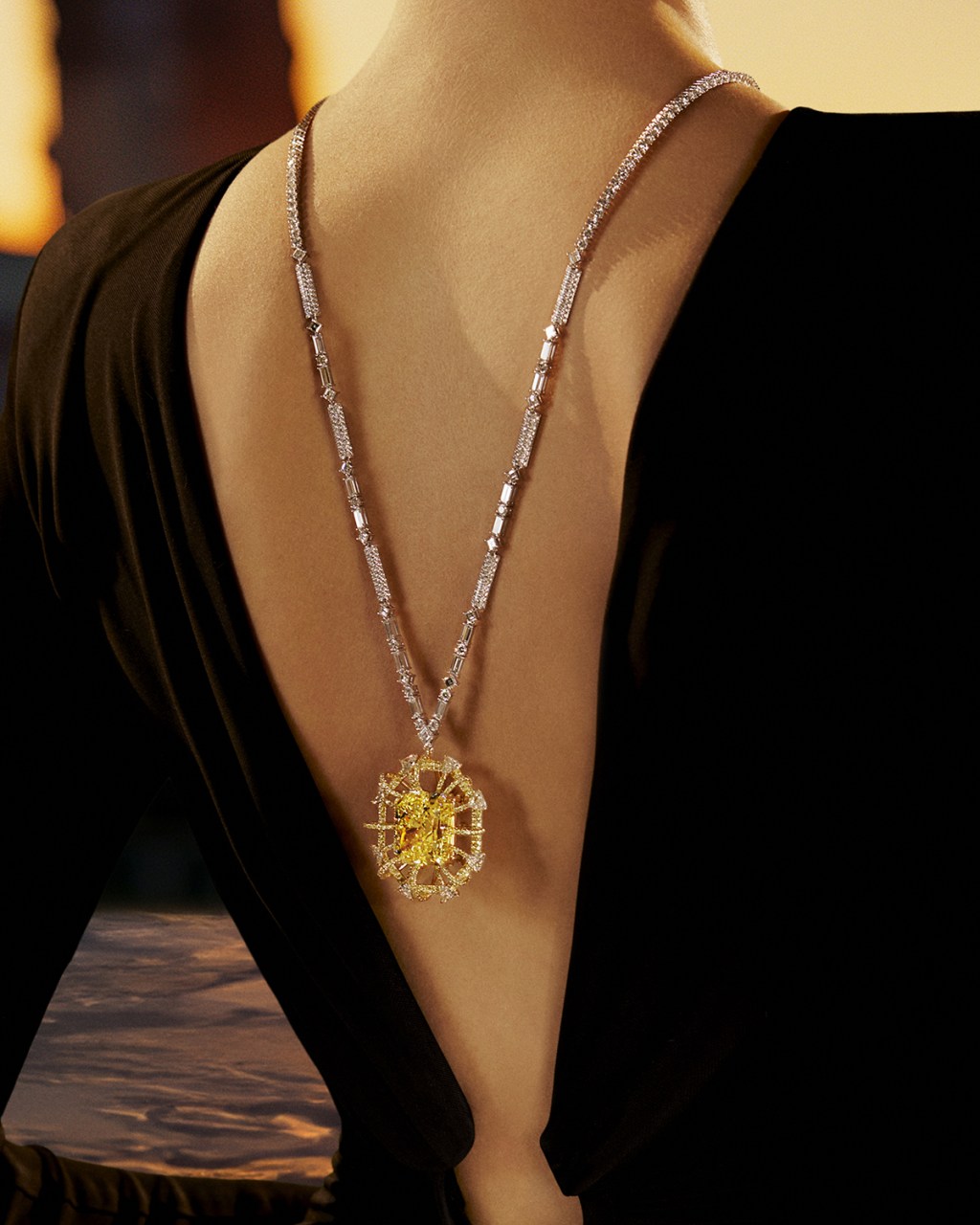Colour, Craft & Creativity: Sarah Royce-Greensill
How a combination of natural diamonds and coloured gemstones ushers in a contemporary era of jewellery design, lush with innovation, whimsy, and creative expression.
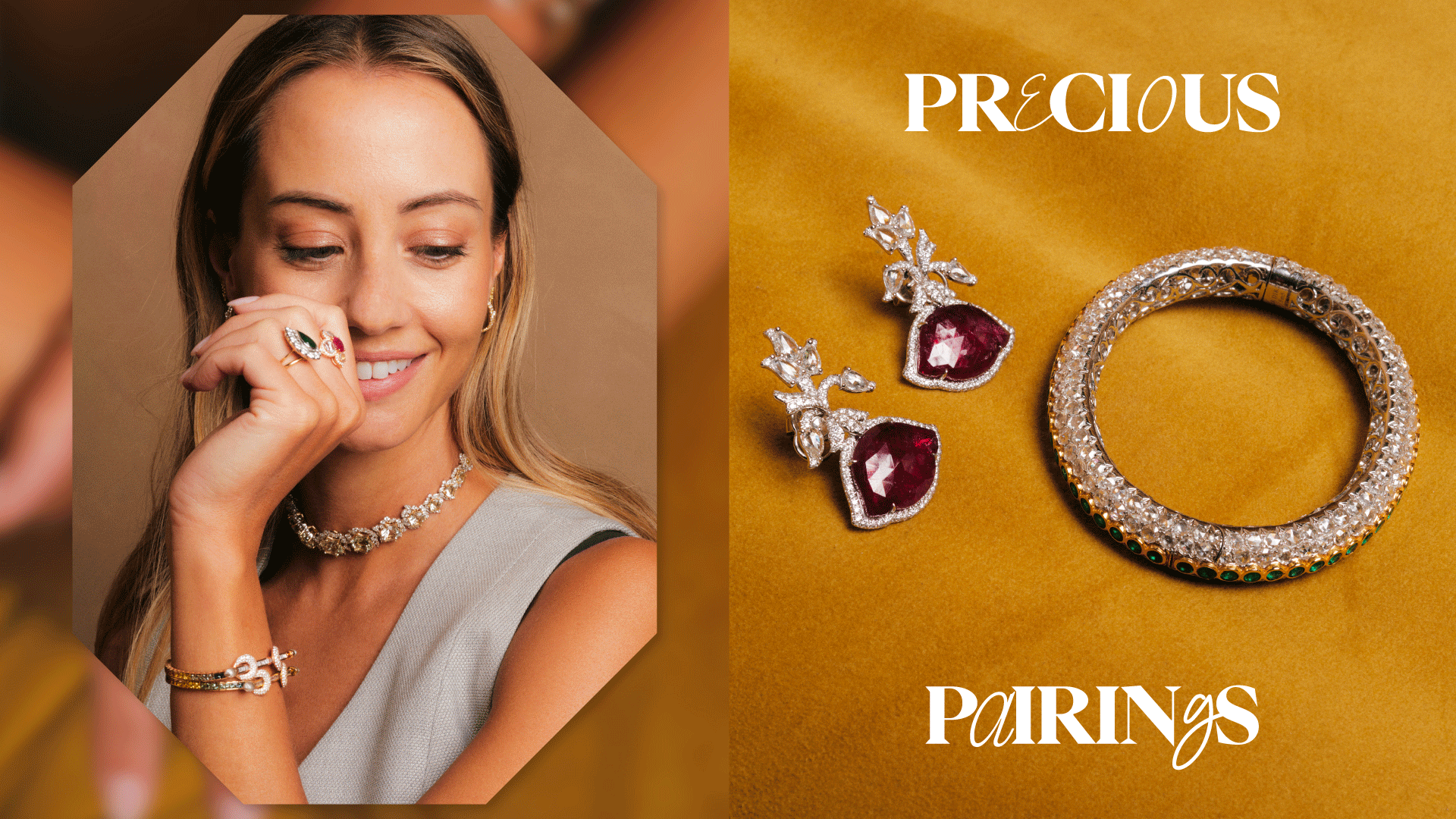
Creating a new chapter in the eternal story of the diamond, coloured gemstones bring ease, joy, and personality to a piece. Colour combinations that move beyond the traditional — ruby, emerald and sapphire — give way to a world of contemporary designs, where refined craftsmanship meets originality of thought. We speak to jewellery consultant Sarah Royce-Greensill on how this trend taps into the current cultural zeitgeist, yet celebrates the timelessness of natural diamonds.
How do natural diamonds illuminate the uniqueness of coloured gemstones, and add value to a piece of jewellery?
The beautiful thing about coloured gemstones is that each one is unique — and just like in our wardrobes or homes, we are drawn to different colours and moods. Natural diamonds bring light to these colours, making them sparkle more and enhancing their natural tones. Sometimes, a strong single colour can seem intimidating; natural diamonds help offset this, bringing elegance and ease of wear to the piece.

• Rings Amrapali Jewel
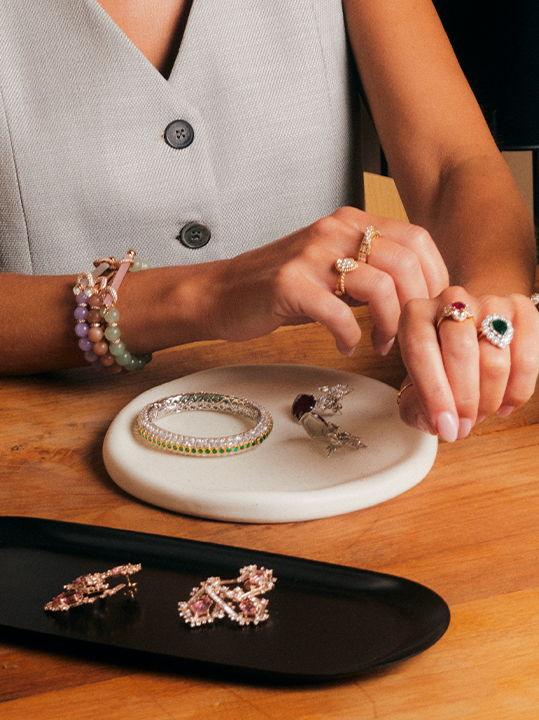
What makes this trend a perennial, with lasting relevance across seasons and generations?
The combination of natural diamonds and coloured gemstones is an evolution of what’s always been popular in high jewellery. Whereas previously people focused on the big four – diamonds, emeralds, sapphires, rubies – they are looking beyond that to a whole spectrum to enjoy, from tourmalines to amethyst, spinel, and topaz. These stones are appreciated for their own aesthetic and beauty, rather than preconceived notions. What were earlier considered “semi-precious” are now being combined with diamonds, which add that sense of value and offer reassurance.
Coloured gemstones bring levity to a piece, encouraging them to be taken out and worn for all kinds of occasions. Take, for instance, the choker by Ananya, a combination of real diamonds and subtle green amethysts. One would normally expect designers to use a more rich, vibrant stone, like an emerald, tsavorite or dark green tourmaline, but these minty green amethysts, cut in a way to echo the shapes of lotus flower leaves, allow for the special craftsmanship of the piece to shine. It’s a statement piece that doesn’t take itself too seriously; you can wear it with jeans and a T-shirt or dress it up. The diamonds bring lots of brilliance and sparkle, but the light, fresh colour of the amethyst gives it a contemporary feel.
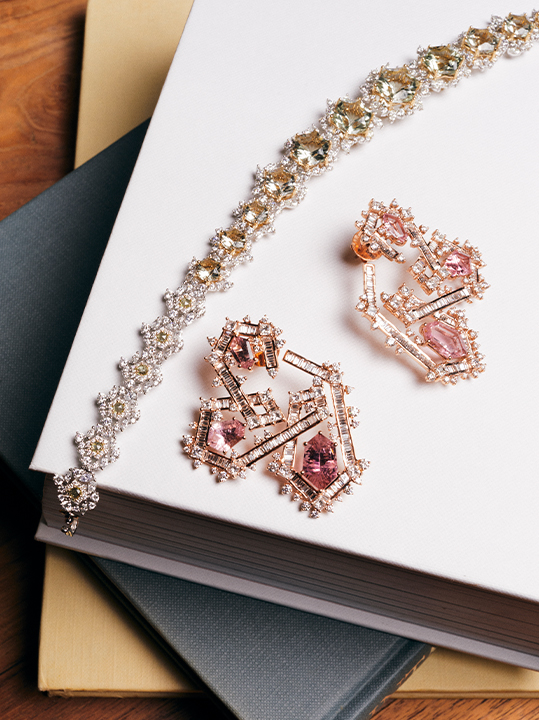
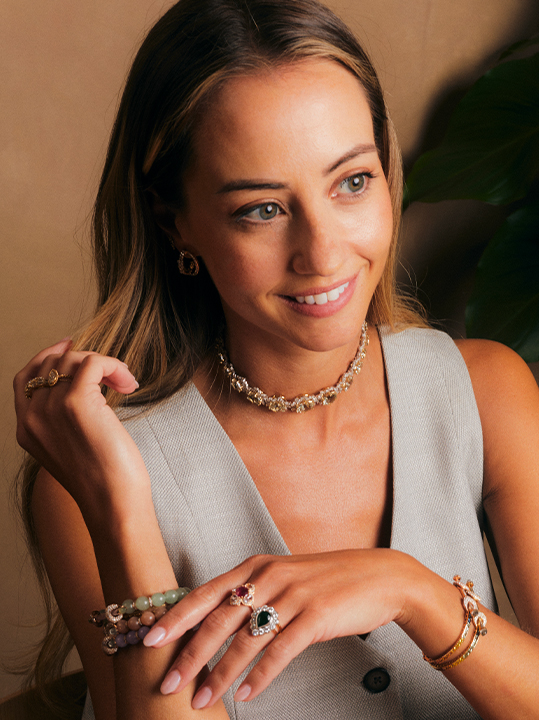
When it comes to design, how does one draw a balance between reimagining a tradition, yet staying true to it in some way?
Originality can often stem from a traditional source of inspiration. Take the lotus flower, for instance, which has particular significance in India. Ananya Fine Jewellery’s pink tourmaline and diamond earrings are a modern pared-back homage to this ancient symbol. Each pink tourmaline is custom-cut to reflect the petals of the flower, surrounded by baguette-cut and brilliant-cut natural diamonds that hang like dew drops. You don’t immediately see the silhouette of the flower, because the designer played with scale and proportion, and added geometry through baguette-cut diamonds — different to the usual curvaceous and feminine interpretations we are used to seeing. On the other hand, Amrapali Jewels’s earrings are a more faithful representation of the lotus, with diamonds around a beautifully faceted ruby, but the craftsmanship and silhouette makes it modern — four petals, micro pave halo and pear and rose-cut diamonds, and minimal metal that makes the stones sparkle.
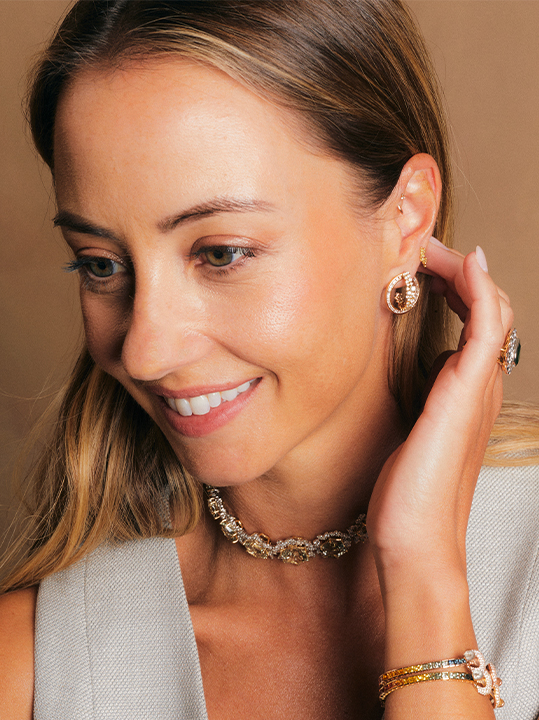
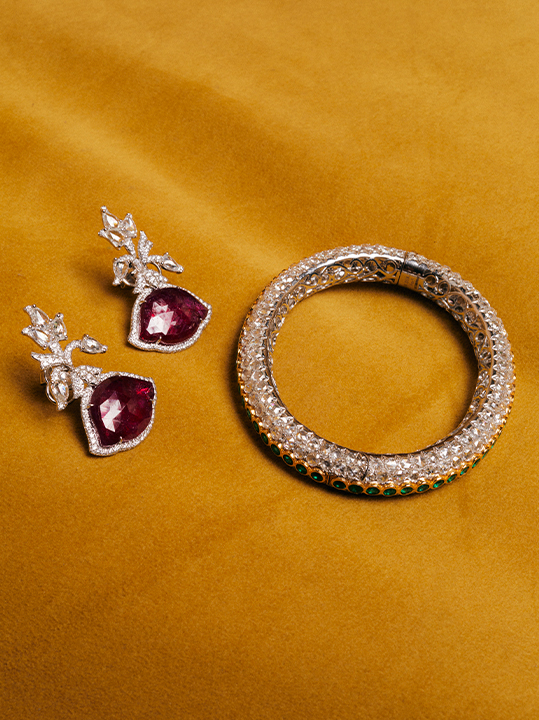
Jewellery often responds to the trends of a season — what gives pieces their lasting relevance?
Timeless jewellery design is a balance between form and function; how one can show creativity and artistry in a small surface area, and create comfort in something that will be worn against skin for hours on end. How seamless the clasp is, its scale and proportions, all come into play. A great example of this is Ananya’s chakra bracelets. While they speak to a trend of astrology, they are a modern abstract representation of it. The use of gemstones also reflects the spiritual meaning these stones have always carried, particularly in India. From a design perspective these are carefully considered and truly unique. The natural diamonds, in particular, are set in a beautiful way to emphases the curves of the beads; the fineness of the bar of diamonds that goes across the bracelet is deceptively simple, bringing balance to the pieces.
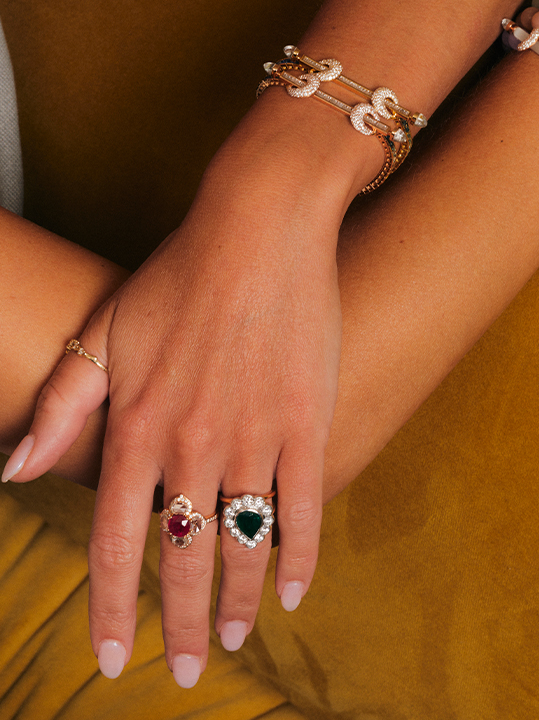
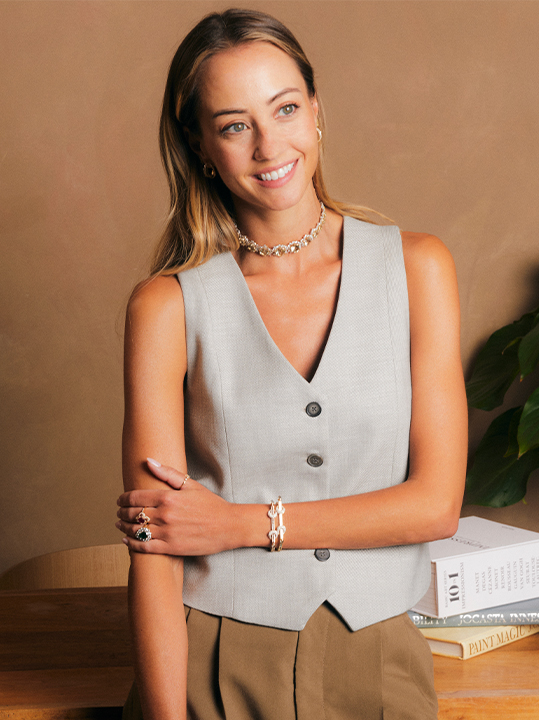
• Rings Amrapali Jewels
When it comes to coloured stones, what is your philosophy? Are you inclined to their symbolism or their hues?
My birthstone is diamond so I’m lucky! I love something with a smattering of natural diamonds. But beyond that, it’s about what the colour says or how it draws me in, how it makes me light up or suits my skin and complexion. I am drawn to lovely pastels, especially mint quartz, which is associated with knowledge and creativity, very good for someone like me who works in a creative industry.
How are contemporary designers today shaping a new aesthetic in fine jewellery?
Design today is pared back, more subtle, with a high focus on craftsmanship and quality of stones. There’s also a more personal approach. Flowers, for instance, have been an eternal motif, you’ll find hundreds of examples in the archives of the world’s biggest houses. But designers today are responding to an appetite for floral jewellery with an edge, a stronger silhouette, that carries the romanticism of florals but without the dainty interpretation of femininity. The combination of natural diamonds and coloured stones strengthens this aesthetic, bringing a sense of levity and subtlety that makes pieces more wearable with all kinds of ensembles.
